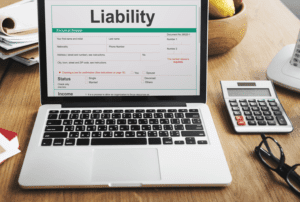For example, additional information like company and cost center lists flesh out simple transactional data, providing more nuanced insights that your leadership will undoubtedly benefit from. We’ll go into greater detail in a bit but, for the time being, just remember that you have a large degree of flexibility when it comes to building your COA and tailoring it to your specific needs. Now, according to the standard definition of a COA, it should focus on the many different accounts tying into your company’s general ledger. And while your GL certainly plays a significant role, our advice is not to be so hyper-focused on the GL that you fail to integrate other dimensions and company attributes into your COA. Obviously, that makes your chart of accounts essential to a host of different people and groups, from your decision-makers and stakeholders to potential investors and lenders.
How do you structure a chart of accounts?
- It’s like a filing cabinet with folders for various aspects of a company’s financial operations.
- A chart of accounts is a tool that lists all the accounts in the general ledger with unique numbering to help locate them in the relevant accounting book.
- This identifier can be numeric, alphabetic, or alphanumeric, with each digit/letter typically representing the type of account, company division, region, department and other classifiers.
- It all depends upon the company’s needs, nature of operations, size, etc.
- Similar to a chart of accounts, an accounting template can give you a clear picture of your business’s financial information at a glance.
The general rule for adding or removing accounts is to add accounts as they come in, but wait until the end of the year or quarter to remove any old accounts. Changes – It’s inevitable that https://www.bookstime.com/ you will need to add accounts to your chart in the future, but don’t drastically change the numbering structure and total number of accounts in the future. A big change will make it difficult to compare accounting record between these years. The general ledger provides a comprehensive view of your financial activities.
Chart of Accounts: The Ultimate Guide with examples
As the business expands, changes in operations or regulatory requirements may necessitate additions, modifications, or deletions of accounts. Non-profits’ COAs differentiate between various funding sources, donations, program-related expenses, administrative costs, and fundraising efforts. Segregation of accounts is crucial to demonstrate fiscal responsibility to donors and regulatory bodies. Regularly review and refine your COA to ensure it stays relevant and aligned with evolving business needs. As your business grows or diversifies, update the Chart of Accounts to accommodate new accounts or modify existing ones for improved financial reporting accuracy. Maintain consistency in naming conventions and account structures throughout the Chart of Accounts.
- You’ll notice that each account in the chart of accounts for Doris Orthodontics also has a five-digit reference number preceding it.
- As a matter of fact, this high-level review provides a perfect segue into our next topic.
- If you have any questions or issues specific to this update, please contact us at
- A chart of accounts (COA) is a comprehensive catalog of accounts you can use to categorize those transactions.
- This segregation of duties helps prevent errors, unauthorized changes, and ensures accountability in maintaining the integrity of the COA.
- It brought the concept of recording transactions with corresponding debits and credits, allowing for more accurate financial records.
Challenges of Ecommerce Accounting (& How to Overcome Them)
Your COA can help you determine how much of your monthly income you can afford to put toward your debts and help you develop longer-term debt repayment plans. To do so, check the Allow Reconciliation box in the account’s settings, andSave; or enable the button from the chart of accounts view. To add a tag, underView, click the Tags field and select an existing tag or Createa new one. Therefore, it pays to be meticulous when either setting up, adjusting, or customizing your chart of accounts.
Since different types of entities use different types of accounts, there is no one single chart of accounts template that would be applicable to all businesses. The accounting software then aggregates the information into an entity’s financial statements. Your accounting software should come with a standard COA, but it’s up to you and your bookkeeper or accountant to keep it organized. Here are tips for how to do this, plus details about what a COA is, examples of example of chart of accounts a COA and more.
Default taxes¶
- It’s not always fun seeing a straightforward list of everything you spend your hard-earned money on, but the chart of accounts can give you an important view of your spending habits.
- Let’s say you sell an asset – not including inventory – for greater than that asset’s book value.
- Similarly, your liability accounts are a list of the debts your business owes to creditors.
- These accounts are separated into different categories, including revenue, liabilities, assets, and expenditures.
- There are five primary types of accounts, i.e., asset, liability, equity, income and expense.
- It’s the total money generated from these activities before deducting any expenses.
- For example, if the first digit is a “1” it is an asset, if the first digit is a “3” it is a revenue account, etc.
Yes, it is a good idea to customize your https://www.facebook.com/BooksTimeInc/ chart of accounts to suit your unique business. If you’re using accounting software and want to set up a customized chart of accounts, you can add or edit parent and sub-accounts to the existing default chart of accounts. Doing this will help you stay organized and better understand how your business is doing financially. All of those financial transactions generating operating revenue for your company fall into the P&L (income statement) category. Just remember, this only includes revenues stemming from the core functions of your business, not items falling outside of your main activities.






